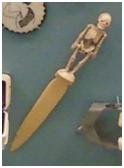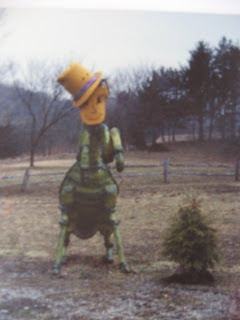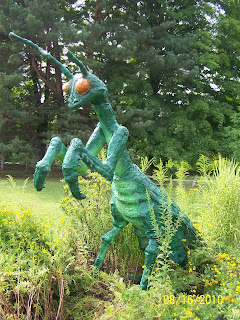A few weeks ago, the Mrs. and I took a few friends to the National Mall in Washington DC to look around some of the museums. While each of the museums have their own sci-fi geek-friendly content, I was suprised to see quite a few references to 20th century sci-fi movies and TV shows in the National Museum of American History--both in the main hall and elsewhere. Click below to see a my photo gallery of federally recognized historical nerdity.
The first geeky thing I recognized in the main hall was a complete C-3P0 costume worn by Anthony Daniels in Return of the Jedi. According to the musuem's Web site, they also have an egg prop from Alien, but I couldn't find it on display anywhere in the building.
Another sci-fi artifact that was on display in the main hall was one of the phasers from the original Star Trek TV show. It was included as part of an artifact wall entitled "Lasers: The First 50 Years", which also featured a cover of an issue of Amazing Stories magazine which included chapters from H.G. Wells' War of the Worlds novel.
Star Trek also made an appearance in the "Paper Engineering: Fold, Pull, Pop and Turn" exhibit as one of the pop-up books on display.
There were other interesting odd and ends in the museum, including a Barbie doll, a 12-inch G.I. Joe doll, and an explanation about the difference between the term "doll" and the term "action figure". I'm sure that the term "action figure", not "doll", has been essential in the sale of many, many geek-centric sci-fi toy lines aimed at boys, both prepubescent and otherwise.
Among the more odd artifacts were a carnival mask from Puerto Rico, and a skeleton letter opener that was featured as part of the "Celluloid: The First Plastic" exhibit wall.




















































